From the very first contact with Bruno Cattaneo by e-mail, one senses his infectious enthusiasm and engaging cordiality. He connects alphorn blowing and the craft of alphorn making with a lot of positive emotions. Bruno is a trained carpenter. The company Cattaneo and Kunz – Bruno together with his business partner Gioel Kunz, occasionally supported by his father Claudio Cattaneo – carries out a wide variety of flooring, carpentry and joinery work. The production of alphorns has proved to be an ideal complement. For a few years now, Bruno has been using the quiet winter months from mid-December to the end of February to build a series of alphorns. He says he looks forward to this special time all year – the stress of construction sites is gone then, and he finds great satisfaction in his job.
The story with the alphorn began in 2012. It was love at first sound. From scratch Bruno learned to blow the alphorn; today he proudly and successfully plays the second voice in a duo with his son. At the same time he began to experiment with the construction of alphorns. Here, too, he had to acquire the necessary knowledge. For four years he intensively familiarized himself with the subtleties of tonewood, researched the connection between the course of the scale and intonation. In 2018, a fire destroyed his studio in Roveredo. In the process, he also lost all plans and templates. Bruno used this setback to revise the design of his horns once again. He increased the wall thickness to 8.5mm to improve the stability of the tones and also the longevity of his instrument. What has remained is the traditional method of production with a lot of manual work. To this day, Bruno does not use CNC (instead, he uses a copy router). Like most others, he estimates about 55 hours of labor to build an alphorn.
The quality of the tonewood is a key factor in the result. Bruno selects the hazel spruces in the region of Surses together with the local forester and then has them cut in winter according to the lunar cycle. Until processing, the wood is stored for about six years, three of which are with him.
The Cattaneo horns have a few special visual elements. On the barrel and cup alternate fancy rings of light and dark wood. Bruno considers this pattern his personal signature; understandably, it annoys him that it has since been copied by an alphorn store. The motif is reflected in the beautifully crafted finishing ring in front of the cup. He carves the white Swiss cross from deer antlers – no alphorn for vegans. On the foot is the inscription “El Chérn d’Alp” burned – “Alphorn” in the local dialect. The gold anodized bushings are sealed with five rubber rings. Bruno wraps his horns with pedigree cane. Last year he built an unwound horn for the first time for Kurt Ott; when I visited, a second one with a 2023 vintage was nearing completion for a Bündner combat horn player.
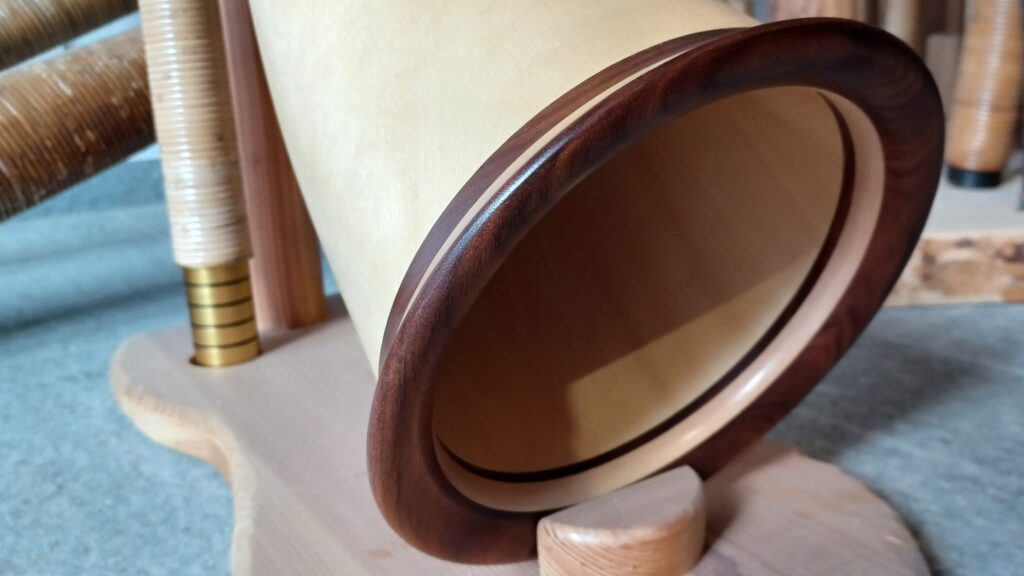
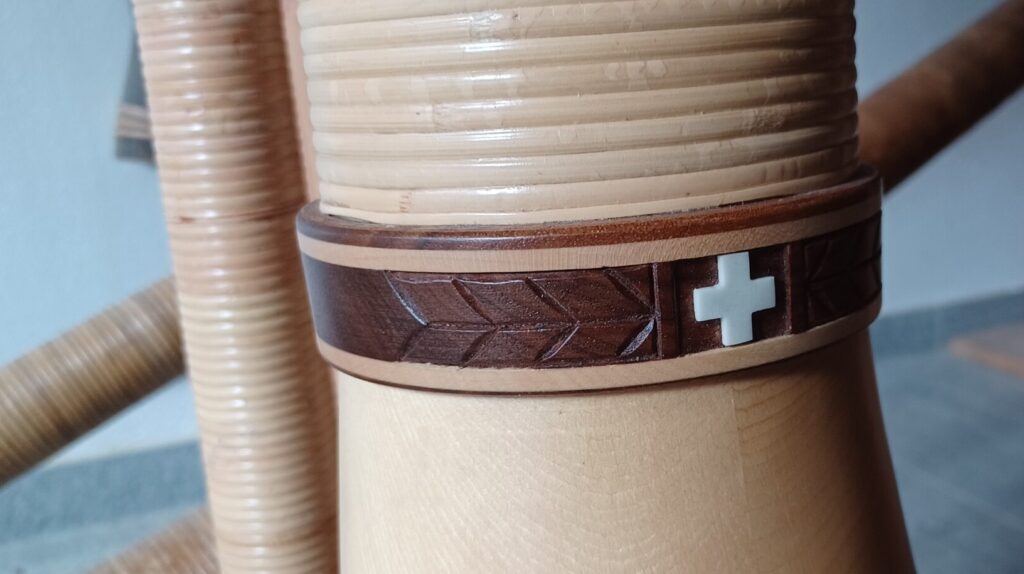
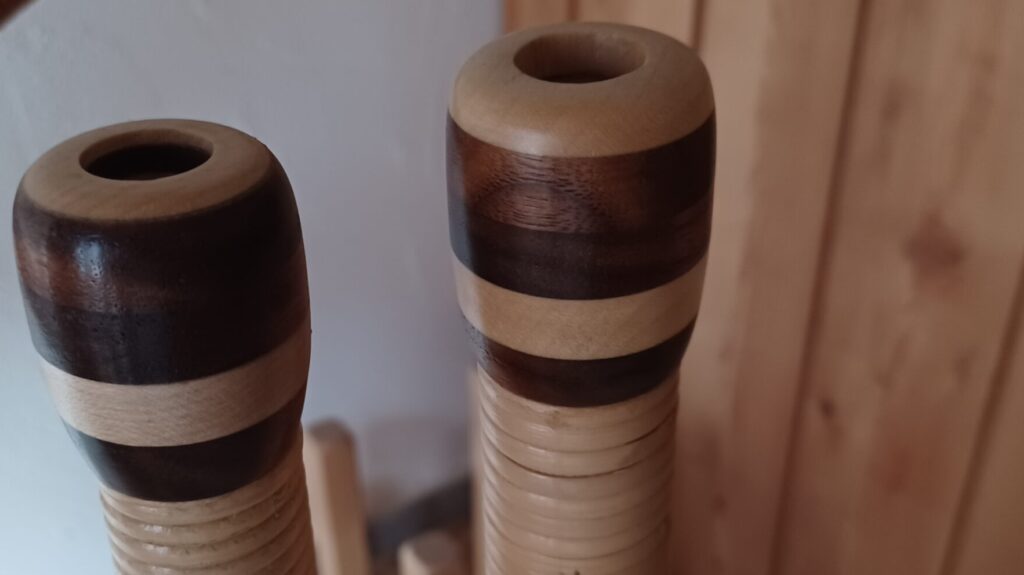
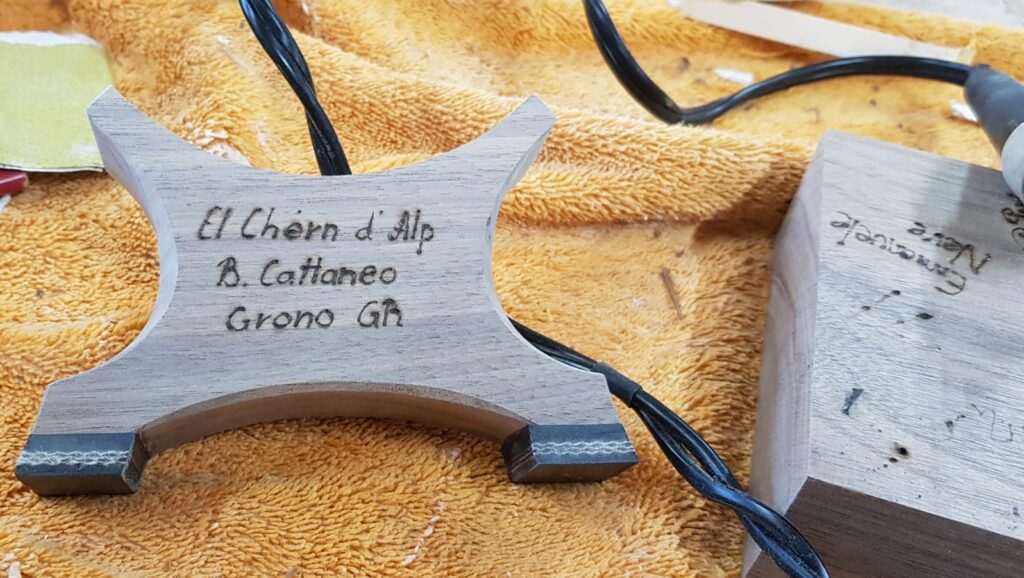
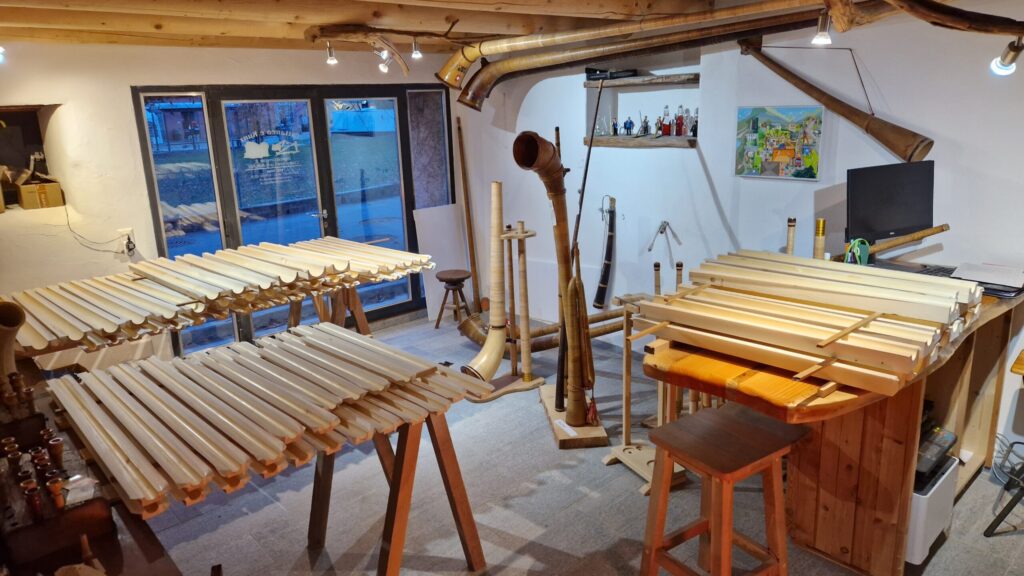
Bruno let me try both an alphorn from the last series and an older, better-rehearsed horn. The older horn required slightly less power and sounded somewhat rounder; however, in intonation and behavior the two were virtually identical. Bruno tunes the horns to 440Hz. During the audition in the sales room, which was perfectly tempered to 20°C, the intonation was very good over the entire range. The mass gives the horn a very nice, full sound with good volume. The notes sit stably and can be shaped well in dynamics. At altitude, they need some strength. Despite the mass, the horns are quite agile and respond well to gimmicks like polyphonic playing and bending tones. Overall, the instruments make a very polyvalent impression on me.
Bruno finishes his (series of 10) alphorns at the end of February. When I visited in early February, all but two had already been sold. So if you miss the ordering window, you’ll have to wait until next spring. A Cattaneo alphorn including carrying case and mouthpiece costs 3’600 CHF. Most customers buy an additional hand tube in F (400 CHF), professional musicians often additionally G and A flat. Bruno obtains the mouthpieces from Heinz Tschiemer.
On the website of Cattaneo & Kunz you can find additional photos of the finished horns and the manufacturing process, as well as a documentation of the RSI from 2017 (at that time still in the old studio in Roveredo). Bruno also speaks very good German and French with his customers. Below are a few impressions from my visit in February 2023.
Conclusion: Very neat handiwork from a next generation alphorn maker. A solid all-round horn with nice musical quality.
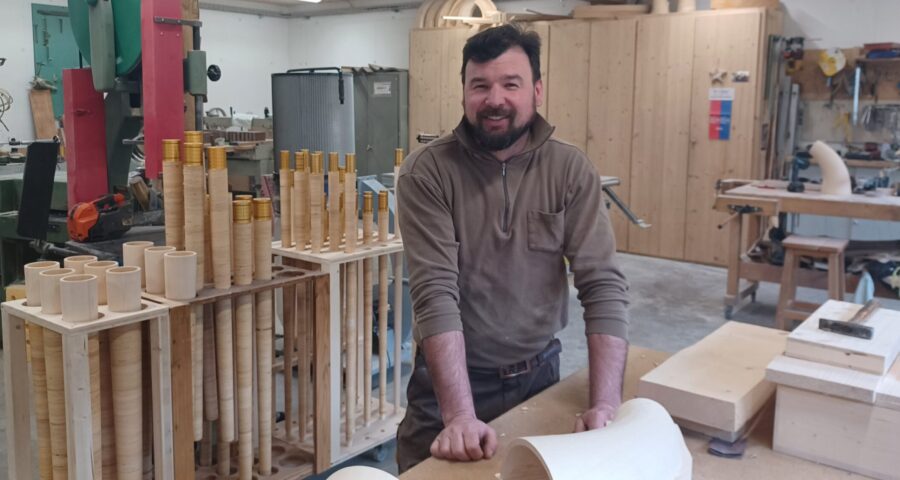
Leave a Reply